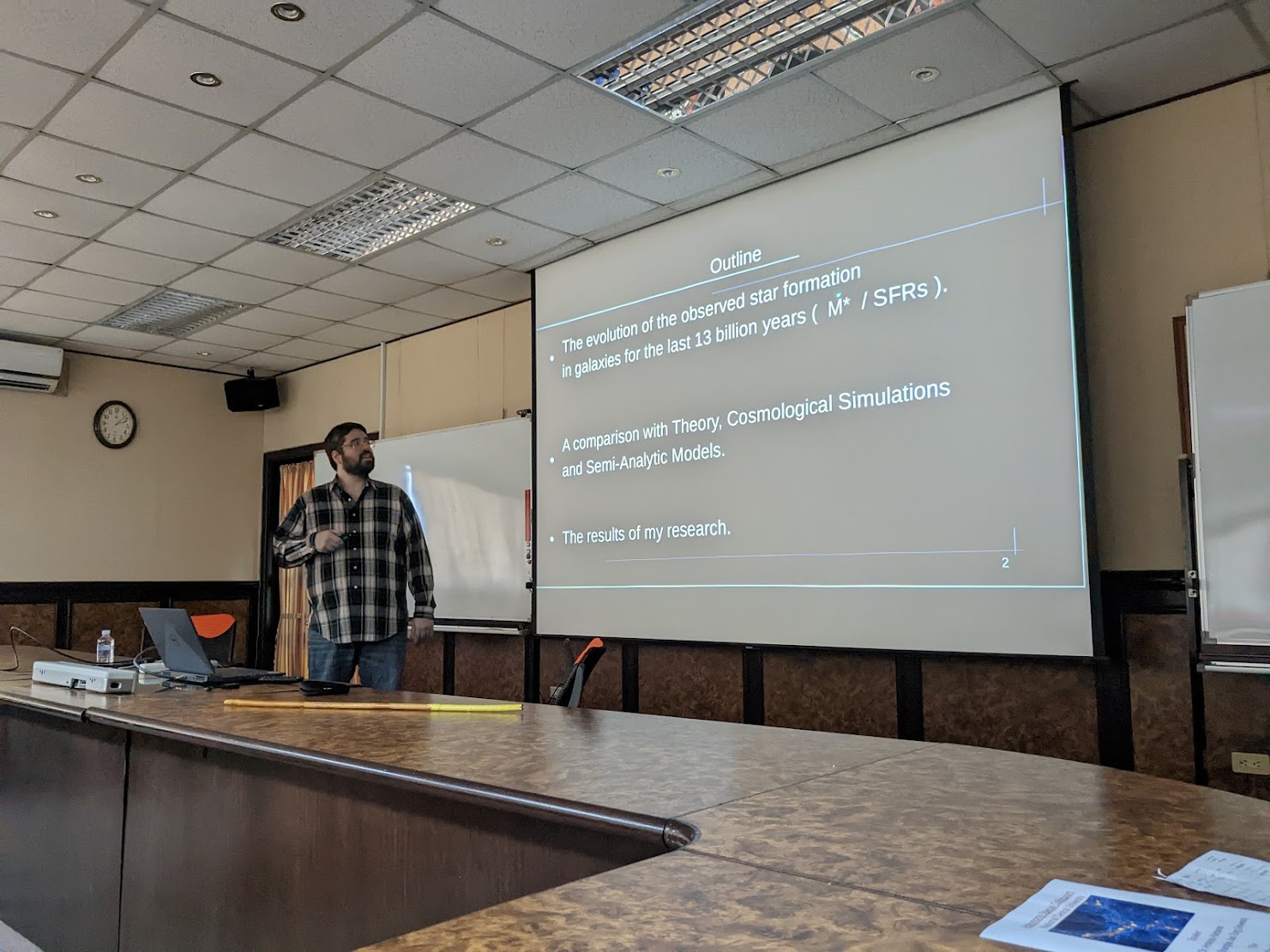Dr. Antonios Katsianis (Astronomy, Shanghai Jiao Tong University)

"The History of the Simulated and Observed Star Formation in Galaxies for the Last 13 Billion Years
of the Universe"
時間/地點: 2022-11-17 14:00 [S4-1013]
摘要:
In order to obtain a deeper understanding of our Cosmos we gather observations of galaxies via our telescopes and construct theoretical models to reproduce these observations. A particular focus is given on the rate at which stars form within galaxies (labelled as the SFR). The "observed" star formation rate-stellar mass (SFR-M*) relation and the "observed" cosmic star formation rate density (CSFRD) represent both important canvases for our current knowledge of galaxy formation and are both routinely used to constrain cosmological models/simulations. In this seminar I present the history of the SFRs and stellar masses within galaxies for the last 13 billion years. I start by reviewing the status of the field. Then I focus on presenting some severe limitations for both the simulated galaxy SFRs obtained from state-of-the-art cosmological simulations (EAGLE, IllustrisTNG, Simba, Semi-analytic models) and observations (UV, IR, radio, SED, Ha, OII indicators). I employ cosmological simulations combined with radiative transfer and demonstrate that the adopted methodology / indicator (e.g. IR, UV, Ha, SED) to obtain the observed galaxy SFRs are bound to heavily affect the final result. I demonstrate that different authors who used different methods, assumptions and indicators to obtain their SFRs indeed reported results in tension for the period of 2007 to 2022. In addition, state-of-the-art simulations (EAGLE, TNG, Simba) are found to suffer from troubling limitations mostly connected to resolution effects and the adopted feedback prescriptions which have to be reconsidered. After demonstrating these limitations for both observations and simulations, I keep trying to find a way to address them. I demonstrate that the observed star formation rate density can be described by only two parameters (against 4, Madau et al. 2014) and a function that resembles a Γ distribution, like numerous other physical processes in Nature (from Economy to Biology) while it has a plateau from z ~ 1-4 and not a peak at z ~ 2. I demonstrate that a simple formalism relying on dark matter halo growth can emerge using this finding which can be used as a reference for both simulations and observations. Last, using up to date data and insights for different SFR indicators I present evidence that the observed CSFRD is dictated by episodic spikes/bursts and does not have a smooth evolution as previously thought.
回上一頁
